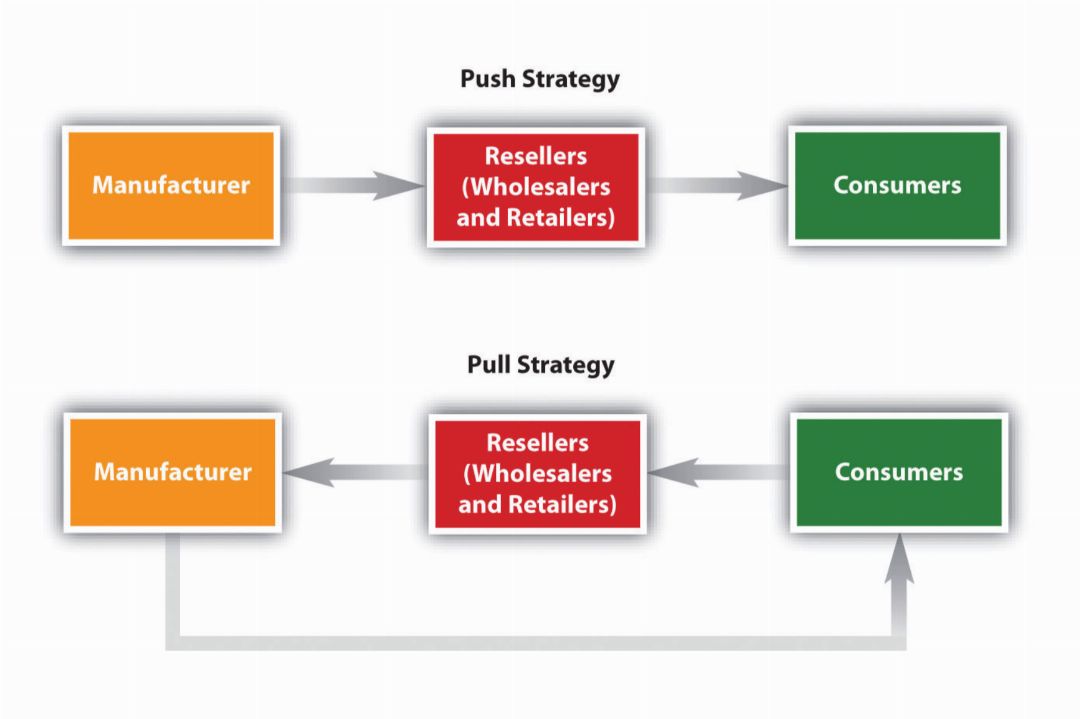What are Push and Pull Strategies?
There are two main types of Promotion strategies which companies use, to create demand for its products.

Push Strategy
When a company uses a “push” strategy, it uses its sales force, or the supply chain, to interact with the customer, and create demand for the product. The company pushes the product to the customers, either by directly interacting with them, or to the wholesaler, who in turn will push it further down the supply chain to the retailer, and ultimately the consumer.
Push strategy is widely used in creating demand for new mobile phones. A characteristic feature of push strategy is that, the advertising spend is relatively low. Rather, the manufacturer relies on trade promotion like offering subsidies to enable retailers buy and sell more of their products.
Pull Strategy
On the contrary, a pull strategy relies on heavy advertising to create demand for a product. Advertising plays a very big role in this strategy. The many ways of creating demand in a pull strategy have increased with the advent of viral marketing. General characteristic of pull strategy is advertising (in its many forms), word of mouth, which all boils down to creating a buzz about the product, in the market. Since this can be a costly affair, manufacturers look for new ways to advertise for free or at a very low cost.
Classic example of pull strategy can be found in marketers of toys based on a popular movie (Eg. Toy Story), or a cartoon (Eg. Pokemon) all these rely on advertising, or the buzz created through TV or by the movie, which again creates demand.
Modern businesses implement a hybrid strategy which has elements of both push and pull strategies. Each strategy, if implemented successfully, will create good demand. There is no better strategy among the two, and it is for the business to decide which one to go for among these, or use a hybrid strategy.
Continue reading here: Maggi: The Two Minute Brand
Was this article helpful?
Readers' Questions
-
walker4 months ago
- Reply
-
Juliane5 months ago
- Reply
-
leonie kr1 year ago
- Reply
-
elliott1 year ago
- Reply
-
pauliina1 year ago
- Reply
-
swen schulz1 year ago
- Reply